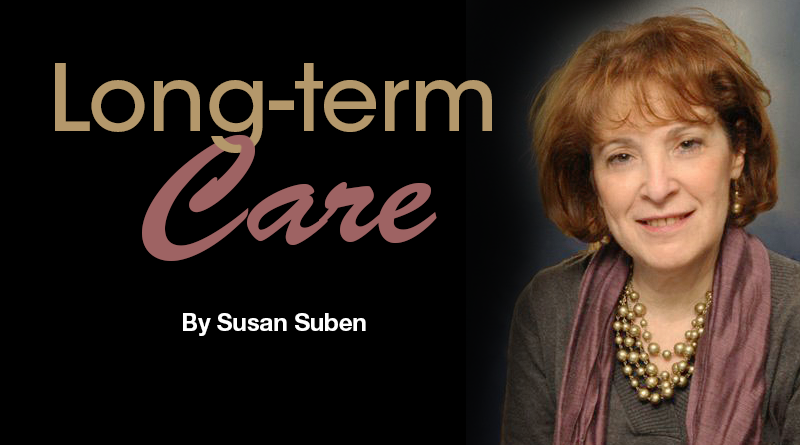Transitioning to Medicare: What to Expect
By Susan Suben
Every day in the U.S., approximately 10,000 people turn 65. It is an age associated with transition – retirement, relocation, grandparenting, etc.
One transition of major significance is switching from employee health coverage to Medicare. There are many things to know in order to ensure your coverage remains comprehensive and meets your needs.
Medicare consists of Part A and Part B (Original Medicare), Part C (Medicare Advantage, which includes Parts A and B) and Part D (Prescription Drugs).
Part A covers hospital and skilled nursing facility stays, hospice care and skilled home health care. Part B covers doctor visits, medical tests, outpatient care, preventative services, and medical equipment.
Original Medicare has a monthly premium for Part A unless you’ve paid the Medicare tax for 10 years. The Part B premium is expected to be $148.50 in 2021 but can be higher if your adjusted gross income from the previous two years is higher than $87,000 for singles and more than $174,000 for married individuals.
There are different enrollment periods for A and B. You can first sign up for A or B (or both) three months before you turn 65, the month you turn 65, and three months after the month you turn 65. There is also a special enrollment period if you did not sign-up when you became eligible due to having employer coverage. It begins the month after your employment or health coverage ends and lasts eight months.
Do not fall into the trap of thinking that original Medicare will affordably pay for all your medical needs. There are co-pays, co-insurance and deductibles that could result in substantial out-of-pocket costs.
For 2020, the Part A deductible is $1,408 for each benefit period in which you use hospital or skilled nursing inpatient care. The Part B deductible is $198. You will also pay 20% of Medicare-approved fees for doctor visits, outpatient services and medical equipment. If you need skilled care in a LTC facility, Medicare will pay for the first 20 days; for days 21-100, you will pay $176/per day; after 100 days, there is no coverage.
Original Medicare has gaps or “no coverage” for certain services. Theses include prescription drugs, dental care, eye exams/glasses, hearing aids/ exams, and custodial LTC.
To fill in the gaps and out-of-pocket costs associated with original Medicare, you can supplement your coverage by enrolling in private plans: prescription drug plans (PDPs), known as Part D or a Medigap policy.
PDPs are designed to help you pay for your medications. Even if you are not taking any medications now, consider obtaining coverage any way. If you do not enroll when you first become eligible for Medicare, you will have to pay a permanent penalty that is added to your monthly premium. The average national monthly premium for a basic plan is $30.
Each PDP has a formulary or range of drugs it will cover. They are divided into tiers – the higher the tier, the higher the cost. In order to determine which plan is right for you and the actual cost of coverage, review the premium, deductible, co-pays and co-insurance, make sure your drugs are in the formulary and find out what tier they are in. Also find out if your pharmacy is considered “preferred” which helps with cost savings.
A Medigap policy will also supplement original Medicare by helping to pay the co-pays, co-insurance and deductibles. There are 10 standardized plans to choose from that offer the same benefits but each company can charge a different premium. You can see any doctor of your choosing. There are no required service areas or referrals. However, the plans do not provide dental, vision or hearing coverage and you will have to enroll in a PDP.
Medicare Advantage plans or Part C are an alternative to having only original Medicare or original Medicare with an added supplemental plan as described above. MAs are offered by approved private companies. Many have no monthly premium. You must be enrolled in Parts A and B and live in the plan’s service area. They generally require the use of in-network providers for the lowest costs and referrals to specialists. The plans cover the services of original Medicare including emergency and urgent care but will have different out-of-pocket costs. As a plus, these plans can cover prescription drugs, dental, vision and hearing, and wellness programs. There are specific enrollment periods and possible coverage restrictions when traveling out of the service area.
It’s extremely important to cover the gaps and out-of-pocket costs when transitioning to Medicare. You do not want any surprises! Your health, affordability and personal preferences will help you decide if original Medicare with supplemental coverage or a Medicare Advantage plan is right for you. You can find useful “information in the Medicare & You” 2021 handbook and at medicare.gov/plan-compare.
Susan Suben, MS, CSA, is president of Long Term Care Associates, Inc. and Elder Care Planning. She is a consultant for Canandaigua National Bank & Trust Company. She can be reached at 800-422-2655 or by email at susansuben@31greenbush.com.

